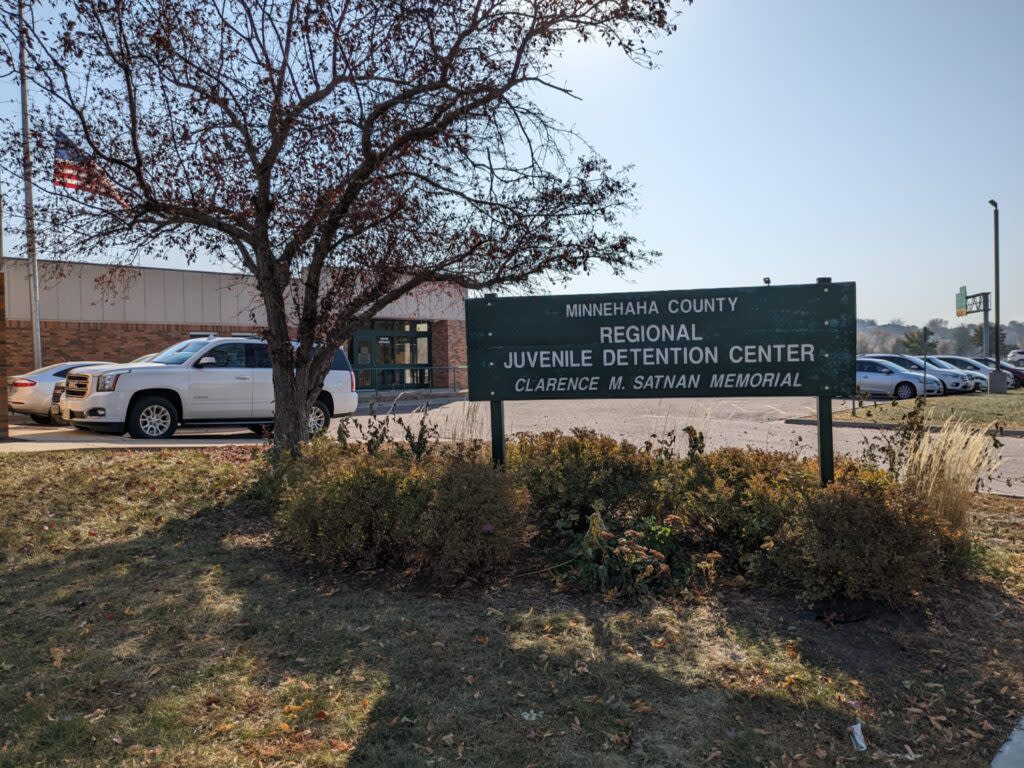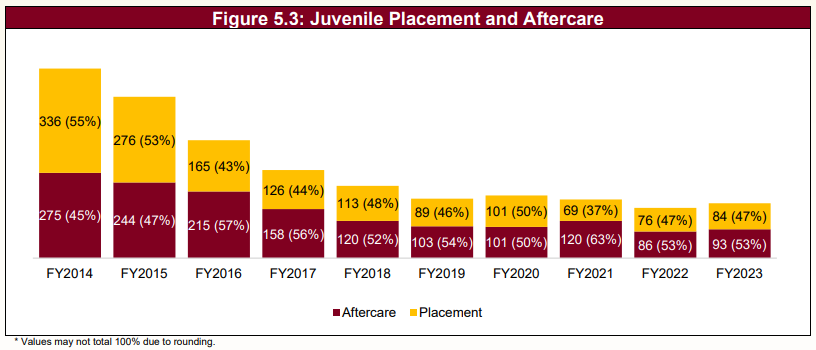Program seeking temporary homes for kids in court system struggles with recruitment, retention

The exterior of the Minnehaha County Juvenile Detention Center in Sioux Falls, pictured on Oct. 21, 2022. (John Hult/South Dakota Searchlight)
Rich Ohm was going to say no. He and his wife are busy with their Watertown-based business, their children are all grown, and they aim to spend up to two months each year traveling out of the country.
But he surprised himself — and his wife. He said yes to becoming the first court resource family in the state, becoming a licensed foster family and opening their home to low-risk juvenile offenders.
“It’s rewarding,” Ohm said. “You’re building good, positive relationships with someone who might not have that opportunity with many adults.”
Ohm and his wife, Beret, have one of two licensed South Dakota court resource homes, which is a new program aiming to keep children out of detention and the justice system as a whole. The need for the program is reflected in juvenile justice statistics: At the end of fiscal year 2023, 84 South Dakota children were placed in a facility or program, such as a detention center, shelter care program, group home or the Human Services Center, while another 93 were receiving aftercare.
A court resource home is used for children who can’t remain with their family or be placed with extended family while working through the legal process. The program is meant to be a cost-efficient alternative for mid-sized counties instead of sending children to facilities in cities such as Sioux Falls.
Studies show children placed in detention unnecessarily are negatively impacted mentally and physically, and their education and future employment suffer. The cost to keep a child at the Juvenile Detention Center or Arise Shelter Care in Sioux Falls is hundreds of dollars a day, not including the cost to drive the child hours away from home and remove one law enforcement officer from the streets for transport.
The program is in its third year of operation, but is only active in Codington County, where Ohm lives, and in Davison County. Yankton County was awarded funding this year to start its own program, while Brown County has been searching for a family to commit to the project since 2021.
“Our youth will eventually be back within our community and reunited with their families,” said Katie Buschbach, Davison County youth diversion coordinator, “so getting services set up right away and fixing the issues within our own community while supporting the family with wrap-around services is the most beneficial way to begin the healing process.”
Finding and keeping a family in place to serve such children is the most difficult part of the program. Davison County’s original family moved shortly after being licensed, but the county licensed a new family earlier this year.
Kelsi Vinger, the diversion and juvenile detention alternative initiative coordinator for Brown County, said counties seek families who can be flexible, are willing to work with the court system and have connections to services within the community for the child.
Children can stay with a court resource home for up to seven days, and hosts must be willing to accept a child on short notice. In 2023, seven Brown County kids were identified as being good fits for a court resource home, but they were “unnecessarily held in secure detention” because there wasn’t a licensed family, Vinger said.
Ohm served as a law enforcement officer for 15 years before he retired from the profession, choosing to teach self defense and martial arts and lead a ministry center in Watertown. Being a cop fit his values, but he wanted to prevent bad things from happening instead of reacting to them. His wife has professional training in human services.
“We know how to start wading through those crises with people based on our experience. Unfortunately, there’s not a lot of people who do what we do or have done what we’ve done in general,” Ohm said.
The Ohms serve as short-term role models and mentors to children. They have served two children since they’ve become licensed. The Davison County family, licensed earlier this year, has served one child.
It’s less children served than either county estimated, but it’s still worth it, said Louis Canfield, the director of youth diversion for Codington County.
“It just wouldn’t make sense to have a standalone facility,” Canfield said. “Even if it’s just one kid a year that has to sit in jail, that isn’t fair to that child. It’s traumatizing.”
The South Dakota Council of Juvenile Services oversees state awards for court resource homes from the federal Formula Grants Program. This summer, the council awarded $30,000 to Brown County, $21,860 to Codington County, $25,564 to Yankton County and $29,500 to Davison County.
Counties can apply for up to $30,000 a year, which covers the cost of operating the program. Costs can include a coordinator salary stipend, a family home study or a licensing renewal fee, and monthly monitoring services from Lutheran Social Services.
The foster family receives an on-call stipend of $100 a week with increased compensation up to $550 a week when the family takes in a child. That money is used at the discretion of the foster family for things such as food, transportation to school or court, or any other needs of the child.
Ohm would like to see the licensing process streamlined so it’s easier for interested families. He said the process was “cumbersome” and took months to complete when most of the training — intended for foster parents — wasn’t relevant to his family’s situation.
“They make you go through it,” he said.
Diversion coordinators across the state want to see court resource homes expanded to other counties. Vinger said the state might need to consider regionalization, since not all counties can afford the program. Such a decision might require guidance from the Unified Judicial System or the Legislature.
“I hope that we can get these programs up and running across the state so we have fewer kids unnecessarily going into our secure detention facilities,” Vinger said. “That plays a role in recidivism and keeping the public safe if we can meet these kids where they’re at, rather than throwing them into a facility because it’s closest and easiest for us.”
GET THE MORNING HEADLINES DELIVERED TO YOUR INBOX SUPPORT NEWS YOU TRUST.
The post Program seeking temporary homes for kids in court system struggles with recruitment, retention appeared first on South Dakota Searchlight.



